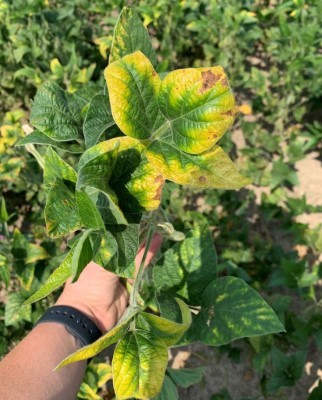 Figure 1. Symptoms of soybean top dieback
Figure 1. Symptoms of soybean top dieback
- Soybean top dieback frequently occurs during the reproductive phases of soybean growth.
- Most observations point towards some relationship with potassium and plant demands during grain fill.
- Testing soil and tissues for potassium is the first step in addressing the issue.
Now is the time of year when symptoms of soybean top dieback (STD) tend to start to appear. What is soybean top dieback? Most likely it is the result of potassium (K) deficiency during grain fill, although some have speculated other potential causes or contributing factors.
Symptoms
During grain fill, plants with STD will show marginal leaf chlorosis, necrosis, and ragged, tattered leaves (Figure 1). Symptoms appear in the upper canopy and youngest leaves. Field distribution often is scattered patches or plants throughout the field or areas with heavy traffic (Figure 2). Symptoms appear during pod fill.
Most often, plants showing STD also test low for tissue K. This could be because soil K is low or roots are compromised due to compaction, saturation, or insect and disease (e.g. nematode) pressure. The way STD presents itself is why there is confusion regarding the cause of the disorder. We are always taught that symptoms of K deficiency shows up in the lower leaves as K is highly mobile and is moved from old tissues to actively growing tissues. In addition, K deficiency symptoms typically occur during vegetative phases of soybean growth.
Some university researchers believe STD symptoms indicate K deficiencies, although the physiological mechanism behind the reverse in symptomology is not yet understood. One hypothesis is that the increased yield potential in newer cultivars results in more mobile K being translocated from the mid to upper canopy in situations where adequate K cannot be acquired from the soil. The majority of K uptake occurs between R2/3, and therefore early season symptoms may not be evident; however, substantial, rapid K demands from developing seed and pods may result in upper canopy symptoms. University research trials conducted in Indiana have shown STD in recent years, and in these cases, youngest leaves are always K deficient.
If you observe STD in fields, send tissue and soil out for analysis. With soil, test for nutrients as well as soybean cyst nematodes. If soil levels are low and SCN populations are elevated, make a plan for controlling these issues in the subsequent crop. If tests do not indicate K issues, check roots for development. Ensure that factors that prohibit adequate root development, such as compaction, are addressed after harvest.

References